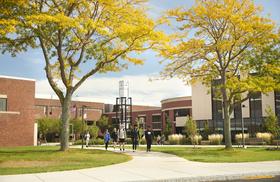The State of Graduation in 2025
When the original article was written, many observers questioned whether California’s community colleges could meet ambitious targets by 2020. Now, half a decade later, the system has not just confronted those doubts, but has evolved its strategy and the broader vision.
Enrollment and Demographic Trends
Enrollment has declined since the COVID-19 pandemic, placing pressure on revenue and student retention efforts.
Over 70 percent of California community college students come from racially and ethnically diverse backgrounds, underscoring the necessity of equity-focused reforms.
More than 1.8 million students enroll annually in the California Community Colleges (CCC) system.
Completion and Transfer Outcomes
Among first-time, full-time students in California community colleges, the average completion rate is approximately 42 percent (for the 2025–26 cohort).
For students who transfer to four-year institutions, outcomes have improved: a majority of CCC transfer students now graduate from CSU within four years (79 percent) and from UC within four years (90 percent).
CSU’s own Graduation Initiative 2025 has helped raise its systemwide four-year graduation rate for first-year students to about 35 percent (up from 19 percent when the initiative began).
Among transfer students from CCC to CSU, 44 percent now complete their degree within two years—close to the 45 percent target set under CSU’s initiative. These data point to a system that is making progress, though unevenly, and one still striving to close achievement and equity gaps.
The Evolution from “By 2020” to “Vision 2030”
Rather than abandon its goals after missing the 2020 horizon, the California Community Colleges system launched Vision 2030 to guide its strategies and deepen its commitment to equity and student success.
Vision 2030 expands the mission beyond graduation targets to include:
Credit for prior learning and recognition of life/work experience
Systemwide data and analytics infrastructure, including a Common Cloud Data Platform
Equity-centered strategies to close gaps for historically underserved students
Cross-sector partnerships and philanthropic investments to sustain innovation
This shift reflects a recognition that meeting numerical goals is insufficient if the underlying inequities remain unaddressed.
Core Strategies in 2025
Many of the strategies introduced earlier—like Guided Pathways and student equity programs—are still in play, but with refinements and new layers of support.
Guided Pathways as the Backbone
Originally launched in the late 2010s as a framework to simplify student decision-making and support, Guided Pathways remains central. Colleges now use mapping tools, milestones, and early alerts to keep students on track.
The Chancellor’s Office is encouraging alignment across local, state, and categorical funds to support the pathway structure.
Data, Analytics & Predictive Modeling
In 2025, colleges are deploying predictive analytics to detect at-risk students earlier. Recent research explores transfer learning models to help smaller colleges adopt predictive systems while protecting privacy. arXiv
Machine learning studies also emphasize using both academic and behavioral data to flag vulnerability points mid-term.
Mentoring Networks for Social Capital
New research from five CCC pilot campuses highlights the value of near-peer mentoring that helps students build both confidence and social networks. Students showed 3–7 percent gains in self-efficacy and course completion.
Implementation advice suggests that mentoring should be embedded in core curricula—not optional add-ons.
Equity-Focused Programs & Supports
The Student Equity and Achievement (SEA) Program consolidates support services to dismantle systemic gaps.
In 2025, the Student Senate passed a resolution urging enhanced support for Black students via mentorship, targeted funding, and culturally responsive services. ssccc.org
Colleges are also making gains via basic needs support, emergency grants, and wraparound services to address food, housing, mental health, and transportation needs.
One notable example: Long Beach City College instituted a “safe parking” program offering students without stable housing a place to park overnight, with access to showers, Wi-Fi, and case management referrals.
Transfer Reform: Cal-GETC
In 2025, California rolls out Cal-GETC, a unified general education transfer curriculum replacing earlier IGETC and CSU GE patterns. The change aims to streamline transfer processes and reduce confusion over which GE path to follow.
Cal-GETC may reduce excess units, eliminate mismatches, and make transfers more predictable for students.
Policy, Funding, and State Support
Without sustained financial backing, even the best reforms falter. California’s 2025–26 budget reinforces commitment but also reveals persistent tensions.
The governor has proposed $341 million in one-time funding to support CCC initiatives and $30 million ongoing for 0.5 percent enrollment growth.
Some cost-of-living adjustments expire in 2025, threatening budget stability—particularly in high-cost regions like the Bay Area.
CCC performance funding is increasingly tied to outcomes (completion, equity) rather than enrollment, which raises stakes for innovation and fiscal risk.
At the national level, California’s model draws interest: other states are watching how CCC integrates data, equity, and sustainable funding.
Success Stories & Case Studies 1. Reedley College (Mentoring Pilot)
At Reedley, near-peer mentoring programs designed in collaboration with faculty increased student confidence and course throughput, especially in gateway courses.
This approach is now being adapted at other community colleges statewide.
2. Riverside and San Diego Districts (Guided Pathways Scaling)
These districts have piloted blended advising models that embed counseling into first-year coursework, using real-time dashboards to flag at-risk students before critical drop points.
3. Fresno State & CCC Transfers
Under Fresno State’s oversight of GI 2025, the two-year CCC transfer graduation rate rose from 36.6 percent to 39.2 percent (Fall 2022 cohort), surpassing targets.
Still, four-year outcomes for other cohorts showed declines, reinforcing the importance of consistency and adaptability.
Challenges & Growth Areas
Despite progress, multiple obstacles endure:
Persistent equity gaps: Underrepresented students (Black, Latinx, low-income) often lag behind peers in transfer rates and completion.
Excess unit accumulation: Many students take more classes than needed, delaying graduation and increasing costs.
Operational capacity: Some smaller districts lack staff or technical resources to adopt advanced analytics or integrated advising systems.
Policy alignment across segments: Variation in admission, GE requirements, and articulation across CCC, CSU, and UC still creates friction for transfer students.
Financial volatility: Dependence on one-time state funds and enrollment fluctuations threatens sustainability.
Addressing these challenges will demand ongoing innovation, strategic partnerships with nonprofits, and careful measurement.
Where We Are Headed (2025 and Beyond)
California’s community college system no longer preaches “by 2020” — it now looks to 2030 and beyond. The focus has shifted from deadline-driven targets to sustainable, equity-based student success.
Key priorities:
Deepening equity frameworks — ensuring that historically underserved students benefit fully from reforms.
Expanding technology + data integration — making predictive analytics and dashboards accessible at scale.
Scaling high-impact practices — embedding mentoring, structured advising, and early alerts broadly.
Strengthening transfer alignment — smoothing pathways to UC and CSU via Cal-GETC and better articulation.
Securing long-term funding — aligning state, philanthropic, and federal investments behind student outcome goals.
As the California system reinvents itself, it’s becoming a national laboratory for how large-scale community college systems can combine data, equity, and institutional culture change to improve graduation rates and strengthen social mobility.
For prospective students and families navigating the CCC system, understanding these pathways and supports can make a real difference. And for educators and policymakers, the work continues: the graduation gap may be narrowing, but the next chapter will test whether the reforms endure.















